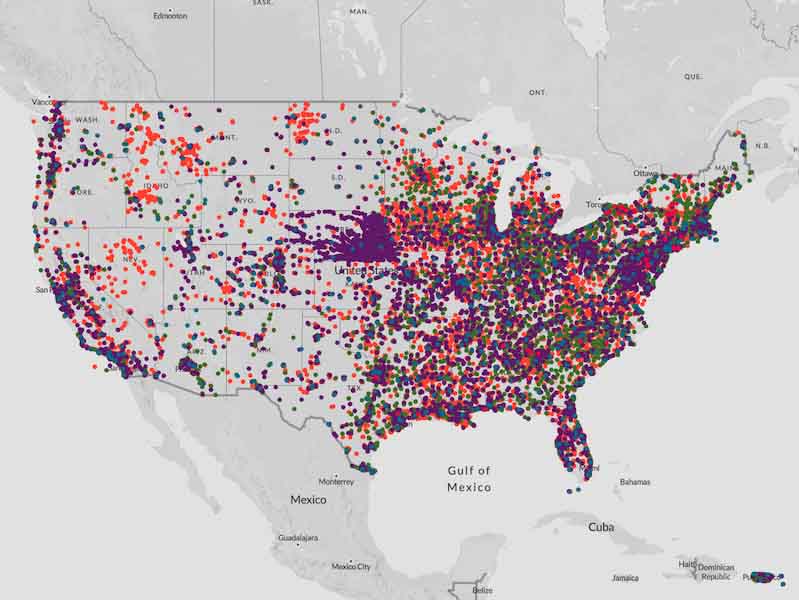The Environmental Working Group released new analysis that it says dramatically increases an earlier estimate of the number of manufacturers and users of the toxic “forever chemicals” known as PFAS that may be releasing PFAS into the environment, including drinking water sources.
 David Andrews Ph.D.EWG’s new estimate — based on a review of newly available government data released by the Biden Environmental Protection Agency — found 29,900 industrial sites that are known or suspected of using toxic PFAS, including:
David Andrews Ph.D.EWG’s new estimate — based on a review of newly available government data released by the Biden Environmental Protection Agency — found 29,900 industrial sites that are known or suspected of using toxic PFAS, including:
- More than 4,700 using PFAS for electroplating and polishing
- More than 3,000 petroleum stations and terminals
- More than 2,300 chemical manufacturers
- More than 2,200 metal product manufacturers
- More than 2,100 commercial printing facilities
- More than 1,800 plastics and resin manufacturing sites
- More than 1,500 paint and coating manufacturers
- More than 1,200 semiconductor manufacturers
- More than 1,000 electric component manufacturers
Click HERE to see the interactive map
EWG is an activist group that specializes in research and advocacy in the areas of agricultural subsidies, toxic chemicals, drinking water pollutants, and corporate accountability. EWG previously identified 2,501 facilities that were already reporting industrial dischargers to the EPA’s Toxic Release Inventory, a federal database of toxic chemical releases by industry, and were known or suspected of discharging PFAS into air and water. The updated map includes an expanded list of EPA-identified industries suspected of using PFAS, and also includes facilities that had not previously reported industrial waste releases to the agency.
“It’s very troubling that so many companies can and may be dumping their PFAS waste into the air and water, given everything we know about the serious health impacts of PFAS, even at very low levels,” says David Andrews, Ph.D., a senior scientist at EWG. “Federal and public knowledge of where PFAS are being used and released into the environment is woefully inadequate to protect health.”
However, some facilities named in the report say they have never used PFAS at their location, an that the EWG report seems riddled with errors.
Ted Ventresca, president of CHEMEON in Minden, Nevada, that manufactures and supplies chemicals to the finishing industry, disputed EWG's claim that they were "suspected" of using PFAS.
"The information stated on the EWG website referencing CHEMEON Surface Technology as a suspected site of PFAS discharge is untrue and not accurate," Ventresca says. "CHEMEON neither works with nor discharges PFAS at our facility. In actuality, CHEMEON is regarded as one of the world's foremost subject matter experts in the removal and replacement of the known carcinogen hexavalent chrome (CrVI) with patented MIL-SPEC technology that is both non-carcinogenic and environmentally safe.”



































